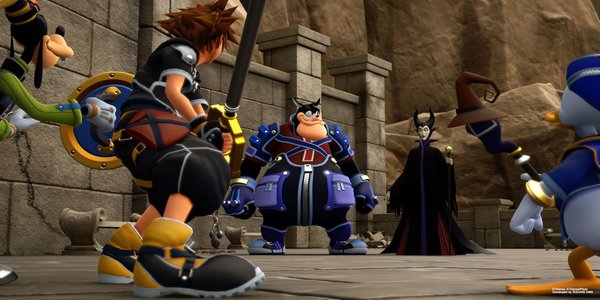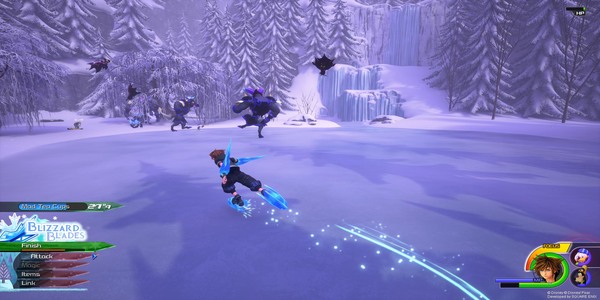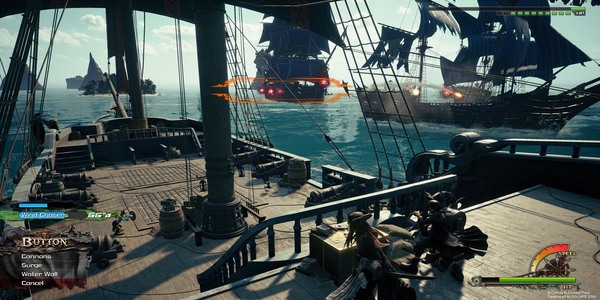Square Enix (studio)
3 (certificate)
28 January 2019 (released)
11 February 2019
Thirteen years is a long time to wait for anything, but that’s technically how long Nomura has kept fans of this crossover franchise waiting for, since Kingdom Hearts II was released back in 2006. Can it live up to impossible expectations, or is it just too late to wrap this saga up neatly?

For a start, this isn’t the third entry in the series by a long stretch. There’s been a bevy of side stories that have been released in the interim, and nearly all of them are required material in order to be up to date on just what is going on with Sora and his friends. Which brings us to our first issue with this game; it has a high barrier of entry if you care about the story, because it’s as complicated as they come. If you can get past that high wall however, then you will find a game that brings closure to nearly all plot lines for the series to date, while safely establishing new ones for the future that will leave fans hungry for the next entry. It’s a story that you will likely love or hate, as is the case with most things involving Tetsuya Nomura by this point.
But beyond the confusing storyline is the gameplay, and this game delivers in spades. Never before has the combat flowed so easily and so beautifully, with everything from the Keyblade Formchanges to the Magic looking amazing. With most of the games since II, the team behind the series has used many of the entries experimenting with the gameplay, adding and taking away systems to see what worked. Here, they’ve taken the best parts of those and refined them into something that melds well with the already excellent combat from II and the results are amazing. Sora can free-run across the fields of battle with ease, even running up walls while fighting enemies or grinding n fences and rails while shooting from afar. And at the forefront of it all is a very simple and easy to understand control system that all players of the series will be familiar with. What really sets this entry apart from others is how Keyblades now have unique abilities and the aforementioned ‘Formchanges’ attached to them, thus meaning they retain their usefulness to those who want them. While the starting Keyblade retains the basic moveset, with a ‘Second Form’ that utilizes more classic moves from previous entries, other Keyblades transform into entirely new weapons, such as a shield, a hammer and even a pair of yo-yos. It’s mad and it’s proud, and it works.

Even more immediate to the player is the difference in level design. Previously, you would have a map broken up into smaller areas with loading screens to separate them. Here however, each area of the map is huge, some spanning the size of entire maps from other worlds in the series, such as the open seas of the Caribbean, or the busy streets of San Fransokyo. And it’s not just size that is noticeably different; here, the worlds have far more complexity and ingenuity in their design, making exploration a far more enticing pastime when searching for the collectibles of the game. And then we have the final piece of the puzzle to being the world’s alive; NPCs. What would have previously been empty places with at most one or two NPCs to talk to, here the worlds are brought to life with people moving around and interacting with one another in their day-to-day lives. From the familiar streets of Twilight Town, to the new locales of the Kingdom of Corona, each world is captured with brilliant attention to detail.
With all that this game does right, though, it makes the issues stick out a little harder with their presence. While recent side entries and rereleases in the series have added a new ‘Critical’ difficulty mode to provide the ultimate challenge to series veterans, it remains absent here. Making this even worse is that, even on the hardest difficulty available, the game is not hard at all; to some, it may even be painfully easy to walk through all but the last world of the game. Even the secret boss of the game, accessible to players after completing the story, is not much of a special challenge. While he does require some preparation and thinking during battle, it’s nothing compared to the classic secret boss; Sephiroth.
And speaking of Sephiroth…

There are no Final Fantasy characters in this game. Not just that, there are no Square Enix characters in this game at all, save those created for the series. For a series that has been marketed since day one as a crossover between Disney and Final Fantasy (later Square Enix in general with the introduction of characters from ‘The World Ends With You’) this feels like a kick in the teeth for those invested in those characters. Making this worse is a recent statement by Nomura that he feels the series no longer needs Final Fantasy, much to the ire of fans. While it may not necessarily need the franchise, it most certainly benefits from its inclusion. This franchise is, after all, a crossover at its core, and it can’t be that if it only has one franchise to work with.
But hey, it’s not like this is the end of Kingdom Hearts. It’s merely closing the book on one story in this universe, and writing the first words in the next. There will be a future in this series no doubt; maybe even a ‘Final Mix’ DLC in the future to add more content as Nomura likes to do.
Hopefully I don’t have to wait another half of my life for this one though.
+++ Best gameplay in series
+++ Wide open worlds that feel alive and fun to explore
++ Decisive conclusion to long-running saga
+ The Pirates level
- High amount of pre-game content needed to understand story
- No Final Fantasy/other Square Enix characters
-- Too easy, even on hardest difficulty



